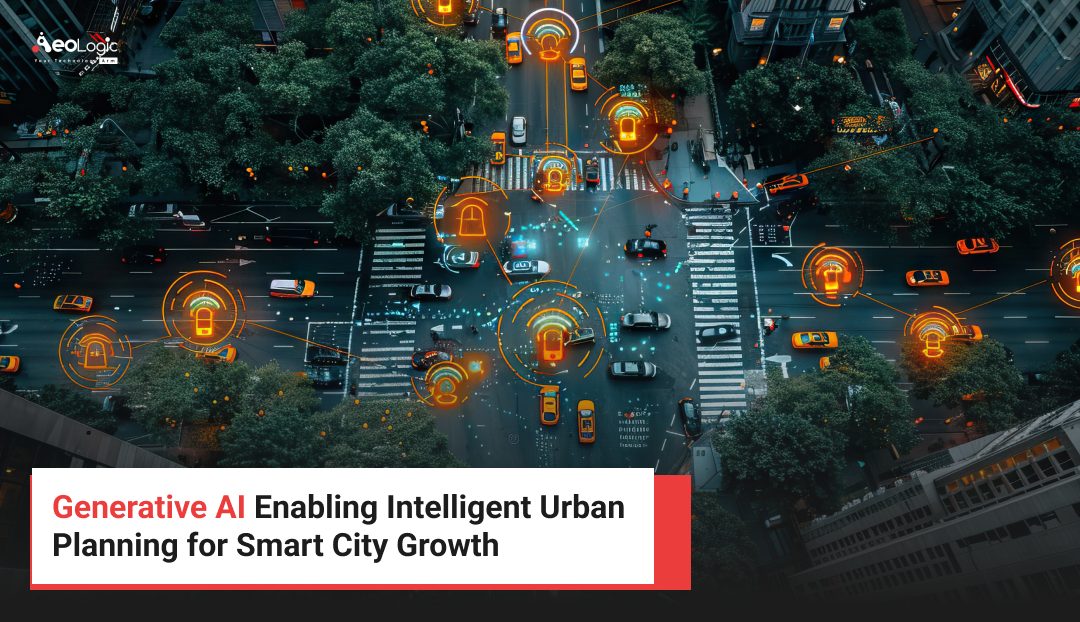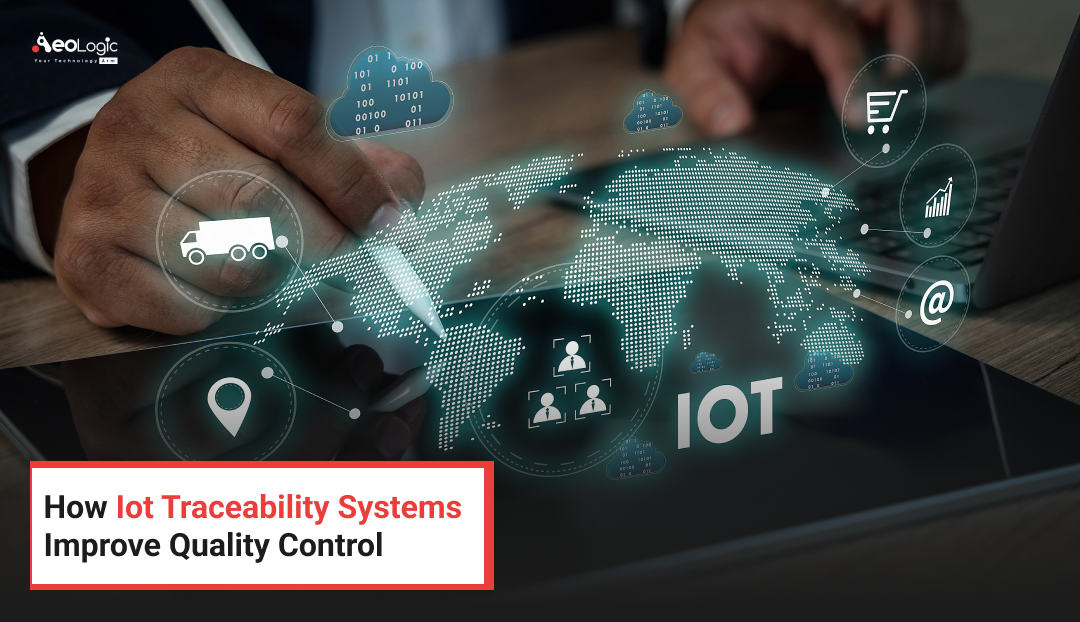Urbanization is boosting at a fast pace as every region, city, and rural area is going under urbanization and smart city development. The technology-powered solutions are playing a crucial role in urban planning and smart city growth. Since there are various technological powers, solutions have enhanced the various aspects of smart city growth and urban planning, although there are many things that are lacking.
The aspects like data management, security, and infrastructure development require some more advanced technology apart from the regular ones. Generative AI integration is playing an advanced role in enhancing urban planning and smart city development that would not be possible with conventional technology and systems.
The generative AI-powered solutions are enhancing urban planning by establishing intelligent solutions for development and sustainability. Generative AI brings various key applications and benefits that no other technology offers. The key benefits and applications include speed and scalability, data-driven decision making, better optimization of resources, citizen-centric design development, and scenario simulations.
These all help to establish a well-advanced smart city infrastructure by implementing smart traffic management systems, advanced public safety management systems, better communication systems, surveillance at every place, future prospective infrastructure or building development, smart building development, and much more. Overall, generative AI solutions can increase the pace and efficiency of urban planning and smart city development.
Looking for? Top Generative AI Solutions Provider in India
Smart Cities and AI Market Outlook
- The smart cities market size has grown rapidly in recent years. It will grow from $792.03 billion in 2024 to $949.94 billion in 2025 at a compound annual growth rate (CAGR) of 19.9%. The smart cities market size is expected to see exponential growth in the next few years. It will grow to $1987.43 billion in 2029 at a compound annual growth rate (CAGR) of 20.3%.
- The global AI in smart cities market size accounted for USD 39.62 billion in 2024 and is predicted to increase from USD 50.63 billion in 2025 to approximately USD 460.47 billion by 2034, expanding at a CAGR of 27.80% from 2025 to 2034.
- By 2025, AI is expected to power over 30% of smart city applications, particularly in areas like urban mobility.
- According to surveys and analysis, over 60% of cities globally are adopting AI technologies for at least one aspect of urban life, with AI investments in smart city projects expected to increase.
These numbers are indicators of the speed of urban innovation, not just predictions. The rapid expansion of cities into more complex smart cities and the rise of Gen AI solutions as a key tool for cities to facilitate sustainable growth, optimize infrastructure, and make city life better for citizens are signs of rapid advancement.
Also Read: The Rise Of AI In The Transportation Industry
With projections that AI will power over 30% of smart city applications by 2025, and adoption growing greatly around the world, planners, politicians, and technologists have a great opportunity to capitalize on this evolving potential for intelligent data-driven decision-making.
The Current Challenges in Urban Planning
Urban planning is now more complicated than ever, and growing a city is one thing, but growing all of the systems that allow a city to function—housing systems, transportation systems, energy systems, and public service systems—is another matter altogether.
Each of these systems is often antiquated. Now, urban planners have the daunting task of making decisions about how to put a range of components together that will improve the urban environment for today and for the next several decades. This is where the most challenging aspects of planning emerge:
Growing Populations and Space Constraints
Urban growth, fueled by global population growth and life expectancy, has many cities facing limits on space in which to build. Urban areas, with their high demand for housing and limited buildable land have unavoidable land use trade-offs; a result of rising land and construction costs. Densification can cause traffic congestion, inadequate public services, and reduced quality of life if not undertaken with the right perspective.
Conventional planning techniques are usually incapable of predicting the future impacts of demographic shifts on traffic, housing needs and public infrastructure demand. Therefore, cities often find themselves in a cycle of responding reactively to existing problems.
Sustainability Pressures and Climate Adaptation
Cities contribute a significant share of emissions and resource use and are therefore a top target for sustainable planning. Urban planners are tasked with evaluating climate resilience, carbon reduction, and sustainable transportation, in addition to traditional design considerations.
Urban design for sustainability is not as simple as putting in more green space or bike lanes; it is much, much more complex. Designing sustainable and inclusive urban environments will require detailed modeling and forecasting to fully understand the long-term environmental impact of even the smallest decisions. This includes evaluating local water users, site/location characteristics, building orientation, energy sourcing, and so on.
Also Read: How Generative AI is Revolutionizing Industries in 2025
Infrastructure Aging and Optimization
Many cities across the globe are still working with infrastructure that came from 50 to 100 years ago. Roads, bridges, power grids, and water systems are decaying. Upgrading or rebuilding these systems is expensive, takes time, and can also create a nuisance for the people who use these services daily.
Planners are juggling multiple priorities of striving to keep old systems in operation while developing new forms of infrastructure that meet modern standards. Without thought-leadership in predictive tools or advanced modeling, planners will lack knowledge to identify priority assets to upgrade and how to actively coordinate upgrades to systems without compounding disruption.
Policy, Zoning, and Interdepartmental Complexity
Urban planning doesn’t occur in a vacuum. Any new project has regulatory approvals, zoning codes, public hearings, and approval processes that have layers of review by multiple agencies. This creates a challenging environment for alignment of interests among all actors and almost guarantees delays.
Policies can also be inconsistent across districts, and planning data is fragmented across departments. Even straightforward questions, such as “Where do we have space to build affordable housing, without disrupting public transit access?” can take months to clarify without an integrated system.
Also Read: Challenges and AI Solutions in Smart Port Operations
What is Generative AI in Intelligent Urban Planning for Smart City Growth?
Generative AI in intelligent urban planning for smart city growth refers to implementing gen AI solutions to enhance the various aspects that contribute to the betterment and advancement of urban development and smart city growth. Generative AI is an advanced version of conventional AI, so it also possesses the potential to do data analysis to make the right decision.
The generative AI-powered solutions enhance the aspects that together develop a city into a smart city. The key aspects are enhanced area traffic, infrastructure, medical infrastructure, public safety, resource optimization, better execution of planning, and much more. Overall, AI solutions are likely to become the most important tool that the entire world will soon adopt to establish a smart and advanced environment.
What are the Benefits of Generative AI in Intelligent Urban Planning?
There are various benefits of generative AI in intelligent urban planning for smart city growth. Here are the top benefits mentioned below.
Optimization of Transportation Network
Transportation is an important aspect in smart city growth, so it should be planned in a way that can optimize the whole transportation network in an advanced and smart manner. The regular technologies could only implement the digital tools, but cannot optimize them.
The generative AI-powered solutions can analyze the data about the traffic congestion, vehicles, routes, lanes, and much more to develop a plan to reduce the congestion, accidents, and other inefficiencies. Also, the integration with other technologies like IoT-powered sensors in smart cities, automation, etc, enhances the urbanization and smart city growth.
Data Driven Decision Making
Decision-making should be in the right manner when it comes to urban planning and smart city growth. The regular technologies cannot provide the seniors with the possibilities to make the right decision.
Generative AI in intelligent urban planning can analyze every bit of data from every aspect to provide the right decision. This helps to establish smart and advanced growth and enhances intelligent urban planning.
Urban Layout And Zoning Design
To make urban planning effective and boost smart city growth, the right design of different zones and proper urban layout implementation are crucial. The regular technologies do not possess that facility. Where the generative AI-powered intelligent algorithm can generate appropriate and efficient layouts for the different zones, such as residential, industrial areas or zones and commercial zones.
The factors such as sunlight, population density, energy availability, etc, that affect the zones can also be optimized with the generative AI algorithm. This helps to develop a better smart city in a structured manner.
Also Read: Role of Generative AI Consulting Services in AI Innovation
Energy Efficient Infrastructure Development
During urbanization and smart city growth, energy is also consumed excessively. This is important to develop such methods, techniques, and solutions that can optimize the energy and also save energy from unnecessary usage.
The regular technologies can help to save energy, but cannot optimize it fully. The generative AI-powered intelligent urban planning enables the development of methods that optimize energy to the fullest and also automatically control the flow according to needs. This not only helps to grow a smart city but also enhances the sustainability within the smart city development.
Disaster Preparation and Climate Adaptation System
Apart from various other problems, disaster disruptions and climatic change could affect the smart city growth. This is crucial to get the right information about the changing climate and disaster risks before potential damage.
The generative AI-powered intelligent urban planning involves analysis of data like weather reports, changing climate, humidity, chances of disaster, and much more, which gives insights and ideas of disaster before damage. It also identifies the high-risk areas, flood zones, and emergency evacuation routes to stay prepared for any type of natural disaster.
Affordable and Inclusive Housing Models
The structures of housing models are also defined as an important aspect in smart city growth. The housing model should be in a manner that saves costs, optimizes space, and has a sustainable environment. With the regular technologies or solutions, it is not possible to attain all.
Where the generative AI-powered intelligent urban planning can develop such housing models that are cost-friendly, better use and optimization of materials, and have all sustainability methods to create a healthy and better environment.
Also Read: The Future of Advanced Generative AI Solutions for Business
Advanced Public Safety
People are the most important in the smart city development, as their safety matters the most. The traditional security and safety system has never led to a smart development, as they do not offer strong security.
The generative AI can integrate with other technologies like IoT-powered sensors, advanced surveillance cameras, motion detection systems, automatic alert systems, and much more to avoid any type of security risk. The better and smarter the security system, the more advanced the smart city development occurs.
Continuous Adaptation
In a smart city, continuous change is important with the changing landscape. The conventional system may contribute to smart city development, but it cannot offer regular adaptations. The generative AI-powered intelligent urban planning enables continuous learning from past scenarios with the help of machine learning algorithms.
This helps to make continuous changes and adapt to every condition that can make an impact on smart city growth.
Also Read: Benefits of IoT Solutions for Smart City and Public Services
Challenges with Generative AI, Intelligent Urban Planning for Smart City Growth
Surely, generative AI offers a lot of applications and benefits for intelligent urban planning and better smart city development. But with a lot of pros, there are always some cons to any technology. So the generative AI also possesses some challenges that could be faced during the implementation of gen AI for intelligent urban planning and smart city growth. Here are a few challenges mentioned below.
- Lack of human oversight seems to be the crucial challenge as the integration of gen AI only provides contextual results. Human-powered oversight is also crucial as it provides actions based on emotions, better situation understanding, and also by real-world evaluation that lacks generative AI.
- The constant needs for updates and maintenance also create challenges in terms of financial and expertise seeking. The governing authority has to invest too much to implement gen AI, and the continuous updates add to the overall budget.
- Resistance to change by the citizens can be another crucial challenge, as public officials, planners, or communities may resist AI-driven changes due to a lack of trust or familiarity. This could affect the smart city growth and urbanization.
Also Read: Role of Artificial Intelligence in Sustainable Cities
Final Take
Generative AI is not just an option for today’s world, but it has become a necessity for urbanization and smart city growth. The generative AI-powered intelligent system can enable intelligent urban planning and smart city growth with a safer, advanced, modern, and more inclusive development.
Generative AI can definitely pave the path of success for smart city growth by enabling intelligent design, real-time optimization, and long-term sustainability. Overall, every region and nation should adapt to achieve the best revolution in urbanization.
Aeologic Technologies helps cities transform complex planning problems into faster, better decisions using generative AI.
We create custom AI models to simulate urban growth, optimize infrastructure design, and support scenario planning in real time. Our solutions work with digital twins, automate planning processes, and are scalable as the city grows.
Aeologic is your trusted partner in creating intelligent, future-ready cities – from strategy to implementation.
FAQs
What sets generative AI apart from typical tools for urban planning?
Generative AI represents an advancement over static models and simulations; it learns from large datasets, and is able to generate new design possibilities through constant learning and evaluating spatial design possibilities based on policy or design constraints such as population density, volume of traffic, sustainability targets, etc. So the urban planner has the potential to evaluate alternative future scenarios as opposed to just one(s).
Can generative AI really help make cities more sustainable?
Absolutely. Generative AI can consider environmental data in relation to urban infrastructure needs and better determine orientations for layouts and energy efficiency for example, minimize carbon emissions, and to provide land use plans that strike a balance between development and the preservation of green spaces.
Is generative AI replacing urban planners?
No. Generative AI is an extremely effective support tool, not a replacement. AI can complete complex calculations and generate multiple options in a short period while urban planners are still the ones making final decisions, in consideration of social, culture, and political context.
What kind of data do you need to work with generative AI and urban planning?
To work effectively with generative AI in urban planning, you typically need to include inputs such as GIS data, traffic or mobility statistics, demographic tendencies, infrastructure line and maps, environmental data/factors, zoning regulations, etc. Basically the more accurate and comprehensive the data used will ideally result in a better set of outcomes generated by the AI.

I’m Deepika Pandey, an SEO strategist and content writer with 6+ years of experience. I create SEO-friendly content that drives traffic and engages readers. I combine data insights with creativity to help businesses grow their online presence effectively.







